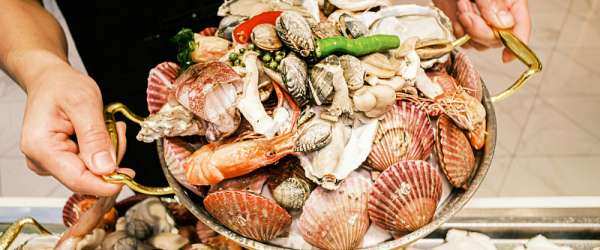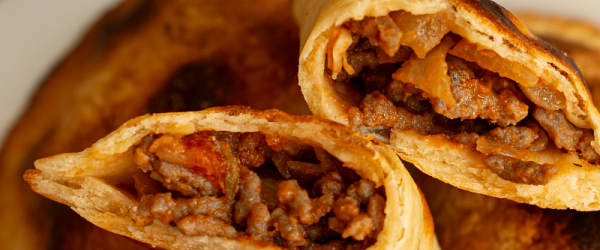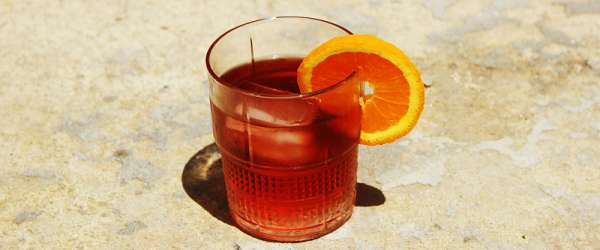Get to know the origins of our wines
21. Srpna 2017
Their original wines such as Alabaster, Teso la Monja, Kripta, Amaren, Hiru, Amancio, Clos Mogador, Espectacle, El Bosque or La Nieta are among the most sought-after gems. Robert Parker, Wine Spectator and others appreciate that conversion with the usual scoring between 96-100 points.
Distribution of Spanish wines
Spanish wines are renowned for their fullness , refinement and delicious fruit flavor , which gives the wines the perfect soil, climatic conditions and the sun. We classify Spanish wines into six different categories.
- Vino de mesa - table wines, mostly without a variety designation, the division into red and white wine is stated.
- Vinos de la Tierra - wines that are not denominated, however, have sufficient local style and character. There are 35 areas in Spain with this designation.
- Vinos de Calidad con Indicación Geográfica (VC) - wines from a specific region, grapes must come from this place.
- Denominaciones en Origen de Espaňa (DO) - wine from a specific area. The variety is listed and guarantees a higher quality. More stringent wine ripening conditions are often given, and only some autocoons of the variety are traditionally allowed, which traditionally perform best on specific local soil. Today, there are 67 DO in Spain
- Denominación de Origen Calificada (DOCa.) - Higher grade DO, first obtained in 1991 by Rioja, later in 2001, this award was awarded to Priorat.
- Vinos de Pago (VP) - wines from winemaking in various specific climatic and soil conditions. Wines in this category are characterized by excellent quality.
Categories of Spanish wine according to the length of the wound
- Joven - a young wine. It is marketed one year after harvest and is recommended to consume within one year. It preserves the character of the variety, freshness and fruity.
- Cosecha - wine of higher age maturation, which can mature for several months in a barrel and then in a bottle. It is marketed mostly in the year when the grapes are processed for wine.
- Roble or semi-crianza - ages 4-8 months in oak barrels.
- Crianza - aged for at least 2 years, of which at least 6 months (for Rioja and Ribera del Duero, where the Consejo Regulador gives tighter conditions, 12 months) in oak barrique barrels, reflecting their smell and taste. Mostly used are American but also French oak barrels. Approximately the same time then it matures in the bottles.
- Reserva - Selected red wines of the best vintage that mature in oak barrels a year and another year in a bottle. Rioja and Ribera del Duero wines mature for at least 18 months in a barrel and 18 months in a bottle. These wines are suitable for longer archiving.
- Gran Reserva - Selected red wines of exceptional vintage, aged 5 years, of which at least 2 years in oak barrels. Rioja and Ribera del Duero wines mature for at least 36 months in a barrel and 24 months in a bottle. They are harder and more suitable for longer archiving.
Fermentado en barrica are referred to as white wines matured in a barricade barrel. White wines mature for a maximum of 6 months in a new oak barricade barrel.
Areas
Montilla Moriles DO
Andalusia wine region in the southern part of Córdoba. The area is typical of the production of sweet dessert wines, whose production is similar to the production of sherry. A semi-continental Mediterranean climate with long hot summers and short winters. The soil is chalky, rich in calcium, and very fertile. Wines are divided into yoghurts, crimson and generoso according to the maturing time. Joven Afrutado is made from Airén and Pedro Ximénez, a young, light wine. Aperitif and Desert is a dry and semi-dry cream wine. Fino and Oloroso are Solera-matured wines with a higher alcohol content (15%).
White young wines are light and fruity, intended for immediate consumption. A typical product of this area is Pedro Ximénez. It has mahogany color, it is sweet and honey with aroma of raisins and roasted dates. It is allowed to produce from these five main varieties: Pedro Ximénez, Moscatel, Airen, Baladi-Verdejo and Montepila. In 2013, Toro de Albalá won the Don PX Convento Seleccion vintage 1946 fantastic 100 points from Robert Parker. You can find the wine in our stores.
Ribera del Duero DO
The wine region in the north of Spain in Castilla and León. This area is characterized by rocky terrain and a temperate climate characterized by hot summer and cold winters. High daytime temperatures and cooler nights during the growth of grapevine help optimize the accumulation of the right flavor in grapes with excellent acidity. Also important is the strong wind in cold winters and autumn, which allows ideal conditions for fermentation due to the low temperature, when excellent fruity is achieved, the characteristic for which the wines are famous. The clay and limestone components under the top layer of soil give the local wine its typical character. Consejo Regulador sets strict ripening conditions for wine. The maturing time must be longer than normal (see height).
The wines from the Ribera del Duero are beautifully aromatic and full of wines, which make the connoisseurs and collectors happy. Red wines must meet the following criteria: at least 11.5% of the alcohol and base must be at least 75% of the 'Tinta del País' variety or Tempranillo. The remaining varieties can be 'Cabernet-Sauvignon', 'Malbec', 'Merlot', 'Garnacha Tinta'. Among the most famous wineries in the area are Dominio de Atauta, Prado Rey, Dominio de Cair, Finca Villacreces or Vega Sicilia.
Rioja
The wine region in the north of Spain, labeled DOCa. It is divided into the sub-regions Rioja Alta, Rioja Alavesa and Rioja Baja. The natural region of the Rioja region has different types of soils and climatic conditions, creating a different wine character. The best wines can only be made from the finest grapes, so the vineyards are so important. Rioja Alavesa undoubtedly belongs to the best wine regions in the world. Vineyards are mostly small in size and in advanced age. They are spread over non-fertile calcium soils, mostly on slopes, with an ideal microclimate. Rioja is an area with a strong wine-making tradition, making wine here so unique. The local grapes are relatively small but of excellent quality. All work on vineyards is mostly done by hand.
In addition, wines from Rioja must meet very strict criteria. Maximum yield per hectare is 6500kg. Up to 4,000 bushes per hectare are allowed. It is only allowed to produce wines from 6 traditional varieties: tempranillo, garnacha, graciano, mazuelo, viura, malvasía de rioja and garnacha blanca. Among the most prestigious and most appreciated classic wineries in this area are Sierra Cantabria, Artadi and Vina Tondonia. On the contrary, among the best modern Rioji that are currently winning the most prizes are Luis Cañas, Vinícola Real or Bodegas Izadi.
Valle de La Orotava DO
The wine region of the Canary Islands, specifically from the north of the island of Tenerife. These are 361 hectares of vineyards in the Orotava Valley from Teide to the sea. The varieties used in this area are mostly listan blanco and listan negro. the following years are starting to work again with the local varieties of tintilla, moscatel, albillo, vijariego, marmajuelo and malvasia. Most small winemakers work here and the whole process is done traditionally - manually. One of the leading representatives is the Suertes del Marquéz winery. They cultivate wine on vineyards over 150 years old with very low yields. On the other hand, the nature of the wines is incredible thanks to the great concentration. Characteristic of local wines is, of course, volcanic soil, which gives the wines a completely different taste and aroma.
Sardon de Duero DO
A wine region in the north of Spain with an eternal wine-growing tradition lying west of Ribera del Duero. The famous winery in this area is Abadia Retuerta.
Somontano DO
Wine region in the province of Huesca, Aragon. Somontano literally means "under the mountains" at least 900 meters above sea level, which accurately reflects the character of this geographical area. The local soil is dark with calcareous ingredients. Thanks to the moisture, the vine roots penetrate deep into the soil and thus obtain the necessary nutrients. The best white Spanish wines come from this area. Traditional varieties are Tempranillo, Moristel, Garnacha, Viura (Macabeo) and Alcañon. Other authorized varieties include Pinot Noir, Chardonnay, Cabernet Sauvignon, Merlot, Chenin Blanc and Gewürtztraminer. The famous winery in this area is Enate, which has fantastically used local conditions to grow varieties such as Chardonnay or Gewürtztraminer. Another famous winery is Vinas del Vero.
Navarra DO
Wine region in the north of Spain. The region is known mainly for the production of rose wines from the Garnacha variety, but also for the quality of white and red wines. It includes five sub-zones: Valdizabre, Tierra Estrella, Ribera Alta, Baja Montaña and Ribera Baja. The climate is continental with sufficient rainfall. 95% of this area's production includes red and rose wines. Rosé wines of the Garnacha variety are raspberry, fresh and fruity. Red wines of the Tempranillo variety are fresh with the aroma of red fruit, of the Garnacha variety, full and harmonious with the aroma of black ripe fruit.
White wines of the Chardonnay variety have a golden color and cream flavor. It also produces sweet white wines of the Moscatel de Grano Menudo variety, which have a complex and fresh flavor of honey flavor. It is allowed to produce from these varieties. Red wines: Garnacha, Tempranillo, Cabernet Sauvignin, Merlot, Graciano and Mazuelo. White wines: Viura, Chardonnay, Garnacha, Malvasia, Moscatel de Gano Menudo. The maximum yield per hectare is from 6200 kg in Valdizabre to 7800 kg in the south of the area. The famous winery in this area is Auzolan.
Sierras de Málaga DO
It is a rarally young wine region (since 2001) in the south of Spain near the city of Malaga, specifically in the La Serranía de Ronda area. The grapes must come 100% of the area. It is possible to work with autocoints, but also with world-wide varieties that have appropriately established themselves in local conditions. Eg: Petit Verdot, Cabernet Sauvignon, Merlot, Shyrah, Tempranillo, Garnacha, Cabernet Franc, Pinot Noir, Graciano, Malbec, Monastrell y Tintilla. The area is at an elevated altitude with characteristic conditions: a cold and humid climate in the winter and very warm in the summer. The most appreciated winery in Rodna is Cortijo de los Aguilares.
Toro DO
Wine region in northern Spain in Castile and León, Zamora province. The rugged continental climate of Atlantic character is characterized by large differences in temperatures between winter and summer and a small amount of precipitation. The soil is sandy. Red wines from this area are typical of the Tinta de Toro variety, similar to the Tempranillo variety, which gives the wine its characteristic aroma, freshness and aroma. Red wines from this area are full and rich, with the aroma of ripe fruit and wood tones. White wines are all dry with bitterness in taste. It is allowed to produce from these varieties. Red Wines: Tinta de Toro, Garnacha. White Wines: Verdejo, Malvasia. Famous wineries from this area are Teso la Monja, Vetus and Numanthia.
Priorat DOCa.
The wine-growing region of Catalonia in the province of Tarragona. It is the second wine region, marked DOCa. The area is known for its excellent red wine production. The vineyards lie on slopes on terraced terrains high in the mountains at 100-700 m above sea level. The soils are volcanic origin with a high content of minerals, containing parts of slate and mica. The roots of the grapevine are deep in order to get the necessary moisture, nutrients and minerals. This type of soil contributes to the exceptional quality of the wine. The climate of this area is characterized by hot summers and cold winters accompanied by the icy wind from the north. The maximum yield per hectare is 6000 kg. It is allowed to produce from these varieties.
Red wines: Traditional variety Garnacha, Cariñena, Cabernet Sauvignon, Merlot and Syrah. White Wines: Garnacha, Macabeo, Pedro Ximénez and Chenin. The red wines are cherry-colored, well-structured, with the tones of ripe fruit and the scent of slate, the taste of the soil. White wines have a yellowish color, fruit aroma and mountain plants with tones of the forest. Among the well-known wineries in this area are the Costers del Priorat, Clos Mogador, the famous winemaker René Barbier.
Rías Baixas DO
The wine region of Galicia in the province of Pontevedra. The area is famous for its white wines from the Albariño variety. It includes the five sub-zones: Val do Salnés, O Rosal, Condado do Tea, Soutomaior and Ribera de Ulla. The center of Val do Salnés is the city of Cambados. The area is characterized by wilting hills, vineyards are on slopes and valleys. The soil is rocky with plenty of drifts. There are produced wines from the Albariño variety. About Rosal lies in the south along the Portuguese border. The vineyards are terraced with typical soils containing alluvial deposits. Contado to Tea stretches to the west with numerous river valleys. Soils are made of slate and granite.
Soutomaior is located south of Pontevedra. Soils are light sandy with granite. Ribera de Ulla spreads north of Pontevedra. The soils contain a plurality of floodplains. There are predominantly red wines. The local Atlantic climate is characterized by damp winters, strong winds and a great deal of precipitation. The proximity of the ocean and the surrounding slopes are crucial for the character of the grapes. It is allowed to produce from these varieties. White wines: Albarião, Loureira, Treixadura, Caiño, Torrontés and Godello. Red wines: Caiño, Espadeiro, Loureira, Sousón, Mencía and Brancellao. 90% of all wines produced are white, mostly from the Albariño variety. The best wineries in this area include Pazo Seňorans.
Rueda DO
The wine region of Castile and León in the provinces of Valladolid, Segovia and Ávila. The area is famous for its white wines from the Verdejo variety. Typical is the continental climate with great differences between winter and summer temperatures. The soils contain large amounts of alluvial matter and are rich in iron and limestone, are clayey or sandy with good permeability. Soil composition allows balanced acidity of wines. It is allowed to produce from these varieties. White Wines: Verdejo, Viura and Sauvignon Blanc. Red wines: Tempranillo, Cabernet Sauvignon, Merlot and Garnacha. The maximum yield per hectare is 8000 kg for white wines (10000 kg for bushes with bar stools). Among the well-known wineries in this area are José Pariente or Roland Gallareta.
Cava DO
Cava is Spanish sparkling wine, which is produced using the traditional champagne method. This means that the sect has undergone secondary fermentation directly in the bottle. About 95% of Cava's total production is produced in the Penedes area south of Barcelona from three local vine varieties: Xarel.lo, which adds color and strength to the sect, Macabeu, characterized by its subtlety, and Parellada, which lends Cava smell. Cava is produced as follows. Tiger liqueur - a mixture of yeast, wine and sugar - is added to the basic white wine. The wine closes in bottles that are stored in deep, cold cellars. Slow fermentation takes place here for at least a minute. 9 months. Yeast converts sugar into carbon dioxide. In addition to bubbles, sludges also form in the bottles. The bottles must be rotated daily to allow the sludge to reach the throat and, after the end of the secondary fermentation, they are frozen and fired together with the throat. The bottle is a so-called expedition liqueur (wine or sugar is added), then closed with a cork plug secured by a wire fuse to prevent the plug from being pushed out.
The bottle is finally labeled and left to lie before the expedition itself. Each Spanish wine with the name Cava must be produced according to this traditional method of secondary fermentation. In order to guarantee the quality of the Cava sparkling wine, the European Union is a recognized trademark of DO Cava origin. The most important Cava manufacturers are Agustí Torelló Mata, Recaredo or recently AT Roca.
Jste gurmán každým coulem?
Přihlaste se k odběrů Gurmánských novinek a my vás budeme 1x za 14 dní informovat o novinkách ve světě gastronomie, nově otevřených restauracích, skvělých ingrediencích a neskutečně lahodných vínech.



